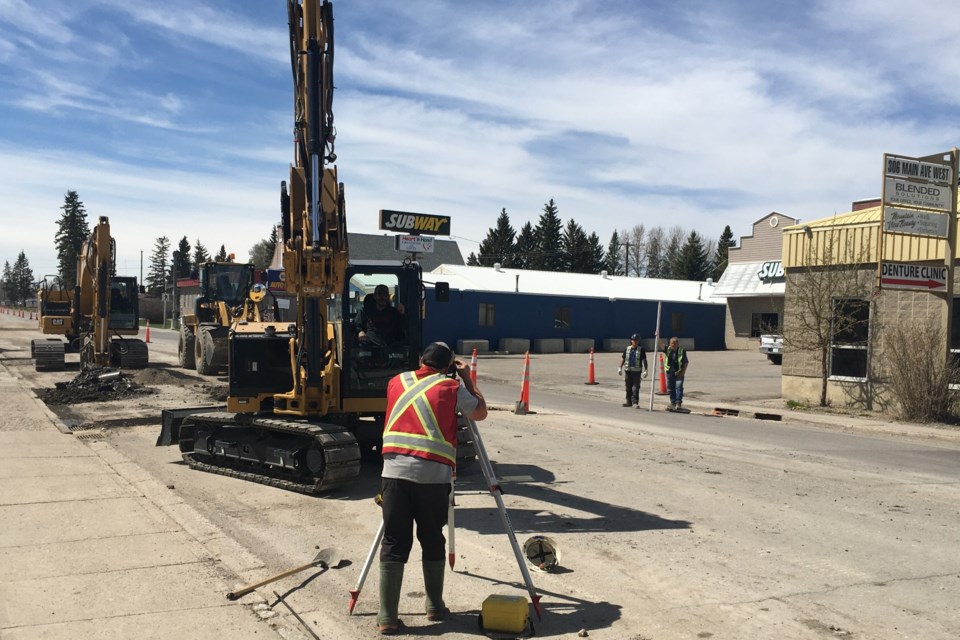SUNDRE – Programs such the Local Government Fiscal Framework and the Canada Community-Building Fund play a crucial role toward ensuring municipalities have the funding needed not only to maintain critical infrastructure but also build up reserves for future capital plans.
The federal and provincial governments earlier this summer renewed the Canada Community-Building Fund (CCBF) with the agreement set to last until March 31, 2034. Alberta will be receiving more than $1.3 billion over the next five years, with approximately $265 million this year.
“Our allocation for 2024 is $205,663,” Chris Albert, Sundre’s director of corporate services, told the Albertan on Sept. 11 during a phone interview.
Meanwhile, the municipality expects to receive a capital allocation of $479,988 through Alberta’s Local Government Fiscal Framework (LGFF) with an additional $62,972 for operating funding, said Albert.
“With both the CCBF and the LGFF capital, we basically have around five years to use that funding,” he said, going onto explain a level of flexibility on how the municipality can spend those funds.
“Those allocations can accumulate, and we don’t necessarily use it on one project or a specific project,” he said.
“It’s an ongoing process. We get an allocation every year, and we figure out how to spend it throughout that whole five-year cycle,” he said.
“If we don’t spend the grant funding – so the LGFF and the CCBF – in a given year, they are held in their own bank accounts, as required by the agreements,” he said.
“We hold those until we can use them on a capital project. They can accumulate. Some years, we might spend all of it. Other years, we might only spend a little bit of it,” he said.
“Sometimes, we might spend a little bit of it on a trail or something like that for part of it, and then some of it will sit around until we have a bigger project,” he said, encouraging anybody who is interested in having a clearer understanding of where that money is being spent to take a look at the municipality’s 10-year capital plan that is available on the town website.
Offering a couple of major examples, Albert said the municipality has historically earmarked portions of the funding from both programs toward the town’s sewage lagoon upgrade as well as the major overhaul of underground utilities along Highway 27-Main Avenue.
More recently, he said that some of the funding has also been funnelled into a project that will breathe new life along portions of Centre Street.
“The capital plan does have a couple of trail connections that we’re going to use some of that funding for,” he added.
“And then we do have a lift station upgrade (for wastewater infrastructure) that we kind of have to look at,” he said, adding those projects are expected to happen within the coming years.
Sometimes, the funds can be useful in a pinch. Town council recently approved emergency work to replace a waterline on Centre Street just north of the traffic lights that had sprung several leaks at a cost of $675,000 with funds from both programs that had been set aside helping to cover that unexpected expense, he said.
So programs such as the LGFF and the CCBF – the latter which requires a functional relationship between the provincial and federal governments – are important, he said.
“The funding is a great thing to have,” he said. “I will never turn down additional money that’ll help out our taxpayers.”
However, the municipality’s administration works with council to minimize dependency on outside sources of funding that are not necessarily always automatically guaranteed.
“We’ve put a lot of work in the last couple of years that we want to make sure that…we’re not completely reliant on them,” he said.
“If for whatever reason, there’s delays in these fundings – or they, hopefully not, decide to cancel them or something – we’re not left in a complete lurch,” he said.
“We’re trying to be sustainable, with or without this funding.”
But making plans for future capital projects intended to accommodate growth while also staying on top of regular upkeep without such programs would certainly be more challenging.
“The funding is great – I love it. I will never turn it down,” he said. “I appreciate all the support that both levels of government give us.”
Mayor Richard Warnock agreed that it’s important for both levels of government to work together.
“We have to have some form of joint funding model … so that there is some funding that doesn’t just come from the province, it comes from the feds,” said Warnock.
Considering the massive costs involved in infrastructure projects, the mayor told the Albertan that like every other municipal official would say, funding from such programs is never quite enough.
“But nevertheless, those kind of funds help us with our projects,” he said.
“It certainly helps. When you get that funding, you can take that portion of the burden from the ratepayers,” he said.
“I think the (provincial and federal) governments realize there has to be some effort put together to assist (municipalities throughout the country).”



